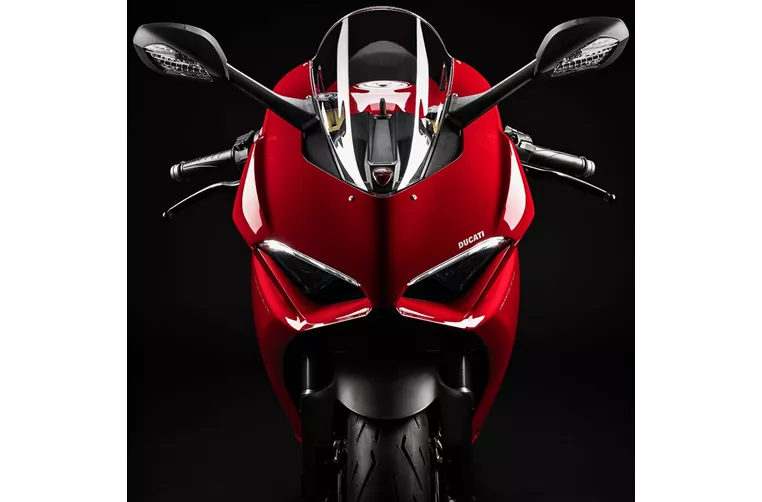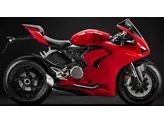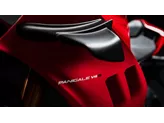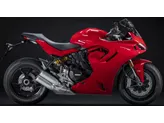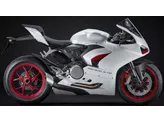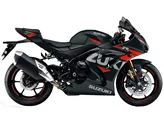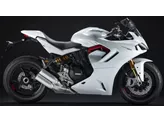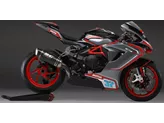Suzuki GSX-R 1000 2017 vs. Ducati Panigale V2 2020

Suzuki GSX-R 1000 2017
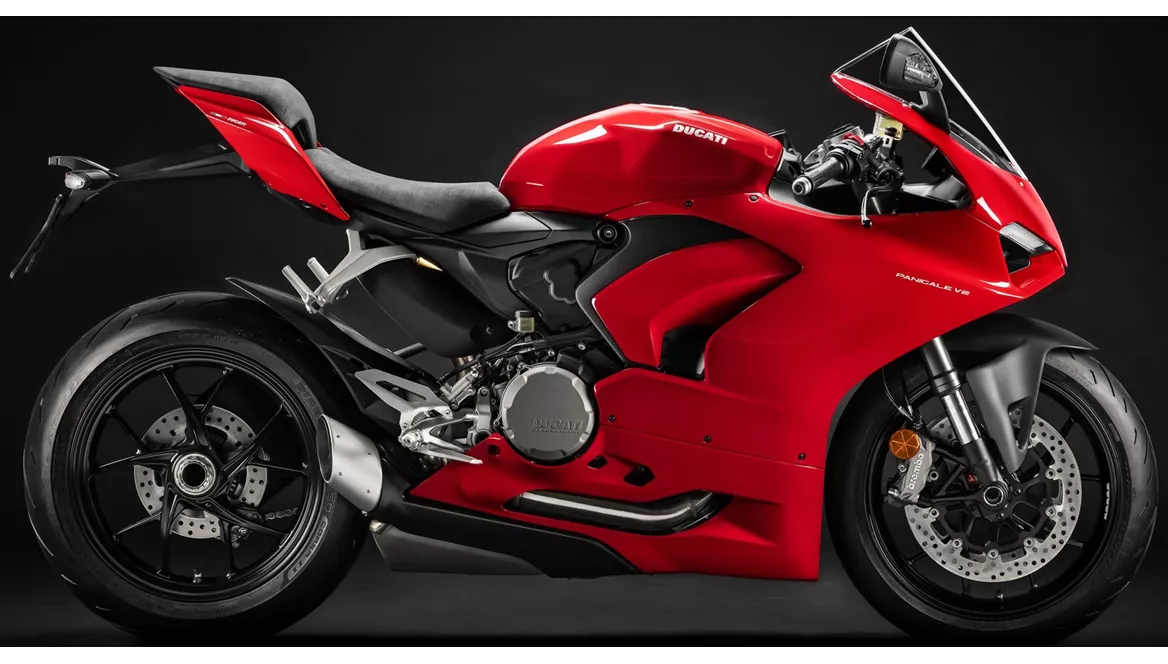
Ducati Panigale V2 2020
Pregled - Suzuki GSX-R 1000 2017 vs Ducati Panigale V2 2020
In terms of engine specifications, the Suzuki GSX-R 1000 2017 features an in-line engine with a bore of 76 mm and a stroke of 55.1 mm. It delivers a powerful engine power of 202 HP and a torque of 118 Nm. The compression ratio is 13.2, and it has 4 cylinders with 4 valves per cylinder. The engine is equipped with DOHC technology and has a displacement of 999 ccm. On the other hand, the Ducati Panigale V2 2020 has a V-type engine with a bore of 100 mm and a stroke of 60.8 mm. It produces a slightly lower engine power of 155 HP and a torque of 104 Nm. The compression ratio is 12.5, and it has 2 cylinders with 4 valves per cylinder. The engine features Desmodromic valves and has a displacement of 955 ccm.
Both motorcycles have similar front suspension setups with upside-down telescopic forks. The suspension technology is Big Piston, and the brand is Showa. The diameter of the front forks is 43 mm, and they offer adjustment options for compression, preload, and rebound. The rear suspension of the Suzuki GSX-R 1000 2017 is a swing arm with a monoshock from Showa, while the Ducati Panigale V2 2020 has a single swing arm with a monoshock from Sachs. Both rear suspensions also offer adjustment options for compression, preload, and rebound. The material used for the rear suspension is aluminum in both motorcycles.
In terms of chassis, both motorcycles feature aluminum frames. The Suzuki GSX-R 1000 2017 has a Twin Tube, Twin-Spar frame type with a rake of 66.8 degrees and a trail of 95 mm. On the other hand, the Ducati Panigale V2 2020 has a Monocoque frame type with a rake of 66 degrees and a trail of 94 mm.

Suzuki GSX-R 1000 2017
Both motorcycles are equipped with double disk brakes at the front with a diameter of 320 mm. The actuation is hydraulic, and the technology used is radial, monoblock. The brand of the front brakes is Brembo.
In terms of advanced rider assistance systems, both motorcycles offer various features. The Suzuki GSX-R 1000 2017 includes ABS, riding modes, ride by wire, and traction control. The Ducati Panigale V2 2020 offers riding modes, cornering ABS, ride by wire, quickshifter, traction control, and anti-wheelie.
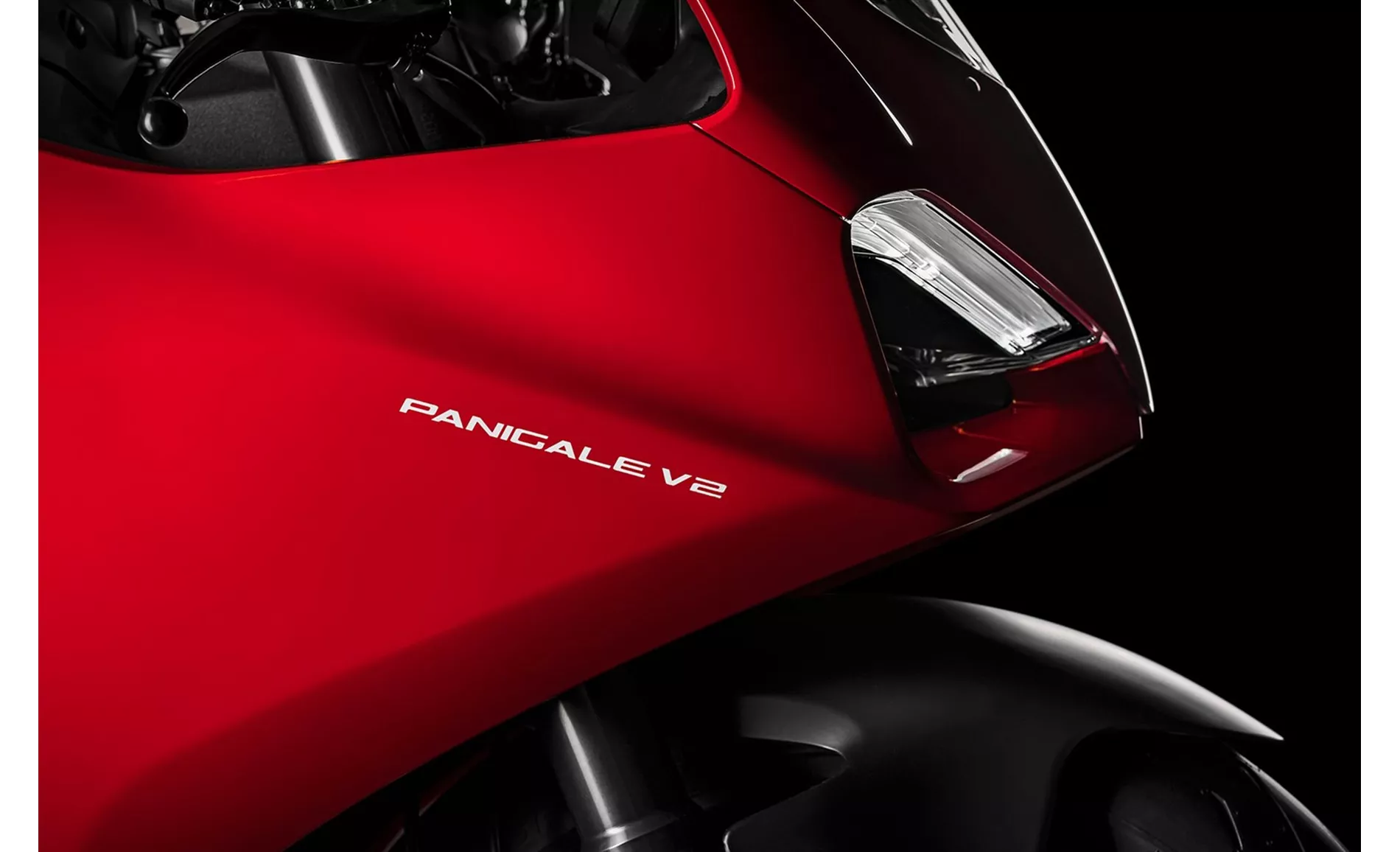
Ducati Panigale V2 2020
In terms of dimensions and weights, both motorcycles have a front tire width of 120 mm and a front tire diameter of 17 inches. The rear tire width of the Suzuki GSX-R 1000 2017 is 190 mm with a diameter of 17 inches, while the Ducati Panigale V2 2020 has a rear tire width of 180 mm with a diameter of 17 inches. The wheelbase of the Suzuki GSX-R 1000 2017 is 1410 mm, while the Ducati Panigale V2 2020 has a slightly longer wheelbase of 1436 mm. The seat height of the Suzuki GSX-R 1000 2017 is 825 mm, and the Ducati Panigale V2 2020 has a higher seat height of 840 mm. The kerb weight of the Suzuki GSX-R 1000 2017 with ABS is 202 kg, while the Ducati Panigale V2 2020 is slightly lighter with a kerb weight of 200 kg. Both motorcycles have fuel tank capacities of 17 liters, with the Suzuki GSX-R 1000 2017 having a slightly larger capacity of 17.5 liters.
In terms of strengths, the Suzuki GSX-R 1000 2017 is praised for its high-revving engine, smooth torque curve, stability on corners, and a great quickshifter. It also has a high-quality chassis and performs exceptionally well on fast tracks. On the other hand, the Ducati Panigale V2 2020 is admired for its beautiful and noble design, outstanding electronics package for safety and fun, and an "experienceable" combination of engine, ergonomics, and electronics. It is considered a great choice for supersport beginners and returners.
As for weaknesses, the Suzuki GSX-R 1000 2017 is criticized for its non-adjustable engine brake. The Ducati Panigale V2 2020, on the other hand, is mentioned to have a slightly lower engine power compared to other engines of similar size, although there are no direct alternatives to the V2. It is also noted that the true potential of the Panigale V2 is only fully realized in Race mode.
Tehnične specifikacije Suzuki GSX-R 1000 2017 v primerjavi z Ducati Panigale V2 2020
Primerjava prednosti in slabosti
Primerjava prednosti in slabosti
Suzuki GSX-R 1000 2017

Suzuki je z modelom GSX-R 1000 2017 opravil odlično delo. Izjemno močan motocikel z neverjetno gladko krivuljo navora. Pravzaprav neverjeten z 202 KM! Podvozje je zelo kakovostno, paket elektronike pa je brez pozlate, vendar zagotavlja vrhunsko zmogljivost.
Ducati Panigale V2 2020
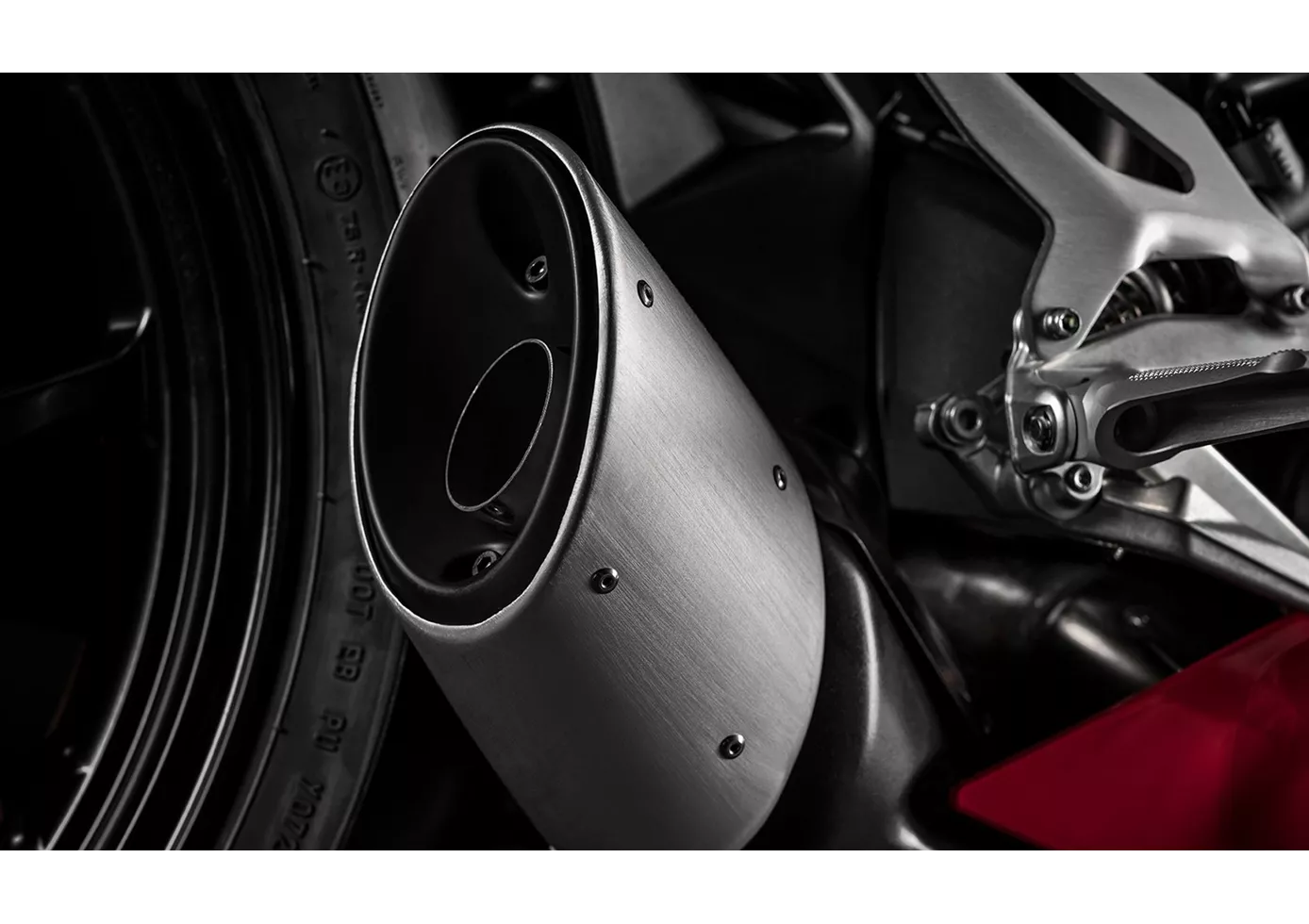
Panigale V2 je za nas vrhunski cestni superšportni motocikel. Prefinjeni elektronski asistenčni sistemi, ki ne puščajo ničesar zaželenega, Ducatijev zabavni 955 cm³ dvovaljni motor Superquadro, ki s 155 KM proizvede več kot dovolj moči za cesto, odličen položaj sedenja in visoka stopnja obvladljivosti. Vse to je značilno za Panigale V2 in zaradi tega je za nas trenutno verjetno "podeželski" cestni superšportnik, ki pa se dobro znajde tudi na dirkališču. Panigale V2 bi moral pritegniti predvsem pilote, za katere so rakete z 200 KM nekoliko preveč, in vse tiste, ki jih je prav tako očaralo to umetniško delo na dveh kolesih.
Primerjava povprečnih tržnih cen Suzuki GSX-R 1000 vs Ducati Panigale V2
There are a few key differences between a Suzuki GSX-R 1000 2017 and a Ducati Panigale V2 2020. It takes less time to sell a Ducati Panigale V2 with 84 days compared to 121 days for the Suzuki GSX-R 1000. Since model year 2005 1000PS.de editors have written 71 reviews for the Suzuki GSX-R 1000 and 9 reviews for the Ducati Panigale V2 since model year 2020. The first review for the Suzuki GSX-R 1000 was published on 3/3/2004 and now has more than 7,100 views. This compares to more than 70,000 views for the first review on Ducati Panigale V2 published on 10/23/2019.

